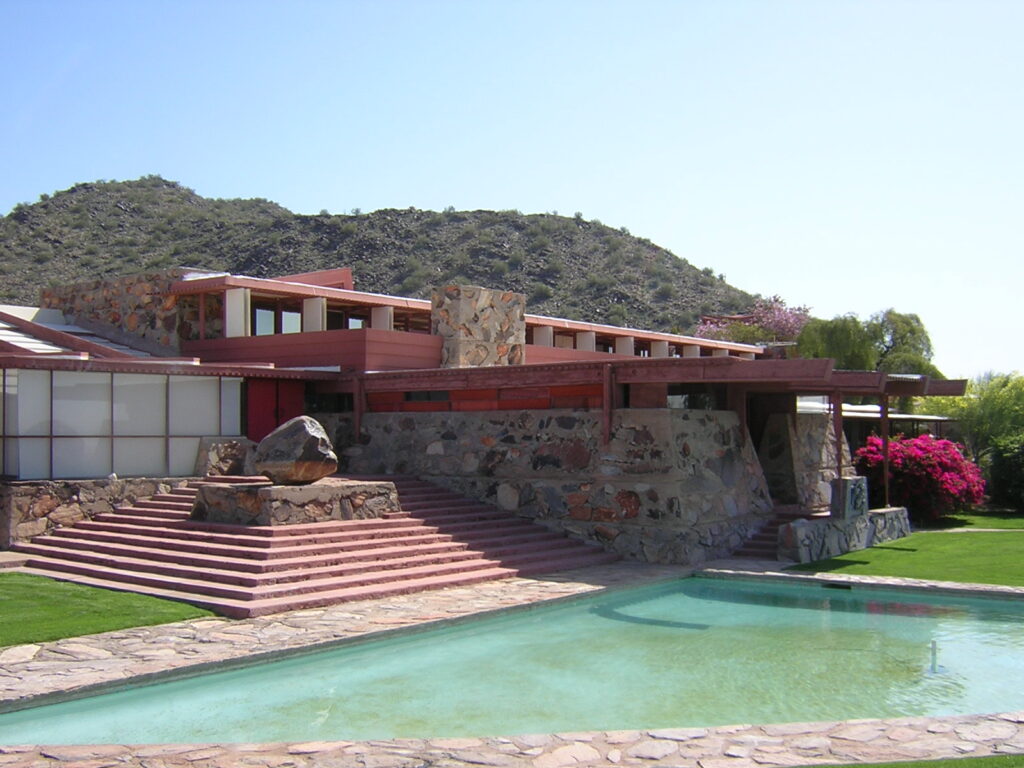By some estimations, Frank Lloyd Wright’s Taliesin West home-studio complex took shape in 1941. But even then, the Arizona Republic presciently noted that “it may be years before it is considered finished.” The Taliesin West you can see in the new Architectural Digest video above is unlikely to change dramatically over the next few generations, but it’s also quite different from what Wright and his apprentices initially designed and built over their first six years of life and work in the Arizona desert. Much of that change has come since Wright himself last saw Taliesin West in 1959, the final year of his life, as the Taliesin Institute’s Jennifer Gray explains while showing the place off.
Wright enthusiasts can argue about the degree to which the expansions, modifications, and renovations made by the master’s disciples and others are in keeping with his vision. But in a sense, ongoing growth and metamorphosis (as well as damage and regrowth, resulting from the occasional fire) suits a work of architecture made to look and feel as if it had emerged organically from the natural landscape. Arguably, Taliesin West even exhibits a kind of purity not found in other, more famous Wright buildings, created as it was without a client, and thus without a client’s demands and deadlines — not to mention with the benefit of apprentice labor.
Like Wright’s original Taliesin in Spring Green, Wisconsin, Taliesin West was a home, a studio, and most importantly, an educational institution. Wright and his students spent the winters there every year from 1935 on, though it was a completely undeveloped site at first. Just getting there necessitated a vehicular pilgrimage, a great American road trip avant la lettre — and indeed, avant l’autoroute. While the Wrights stayed at an inn, the apprentices camped out on-site, living a hardscrabble but highly educational existence, devoted as it was to building straight from plans that their teacher could have drawn up the day before. Even after Taliesin West was basically built, then hooked up to such luxuries as plumbing and electricity, communal rigors of life there weren’t for every student. Yet it did have its pleasures: it’s not every architecture school, after all, that has its own cabaret.
Related content:
Inside the Beautiful Home Frank Lloyd Wright Designed for His Son (1952)
What Frank Lloyd Wright’s Unusual Windows Tell Us About His Architectural Genius
How Frank Lloyd Wright’s Architecture Evolved Over 70 Years and Changed America
Based in Seoul, Colin Marshall writes and broadcasts on cities, language, and culture. His projects include the Substack newsletter Books on Cities and the book The Stateless City: a Walk through 21st-Century Los Angeles. Follow him on the social network formerly known as Twitter at @colinmarshall.







